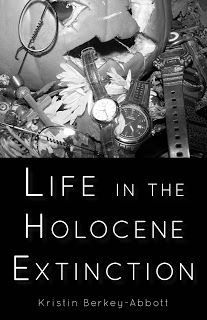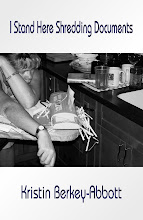I've written about Nathan Englander in several blog posts (here on my creativity blog and here on my theology blog), and now I've finally gotten the book What We Talk About When We Talk About Anne Frank. Last night I read the short story that bears the same name--wow!
At first the story struck me as humorous, which it is. I wasn't ready for the dagger twist at the end. I expect to think about it for many days, but I won't write more about it, because I don't want to spoil it for people who haven't read it yet.
There's a scene where the characters go into a huge pantry and talk about how it could be turned into a hidden space, should the family ever need to shelter people being hunted by the government. This conversation is in the context of Jews being hidden from Hitler, but it made me think of other situations.
My all-time favorite Marge Piercy novel is Vida, about a leftist activist named Vida who on the run from the government in the early 70's; she's gone underground and relies on her friends who aren't similarly compromised to shelter her and help her. It's a great depiction of the student movements of the 60's and how some of them moved into terrorism; as you might expect, one of the central questions of the book centers around how we should protest when we feel our government is wrong. It also explores why some women moved towards feminism while some didn't.
When I first read it in 1987, I wondered how it would hold up through the years. I've read it several times since then, and it's always held up well. Even the domestic terrorism theme continued to work, which I wondered about with the terrorist events of Oklahoma City and September 11.
I've long had a plot in my head, which I may never develop into the novel that it could be, that would have a right wing terrorist and a left wing terrorist hook up. I had this vision of a feminist woman in the North Carolina mountains and a wounded man who shows up talking about his work against the government. She assumes he's a lefty, but later finds out that he's been bombing abortion clinics.
Maybe I should see how it works as a short story. Hmm.
I've also been thinking about this article by Andrea Chalupa which explores Orwell's fight to get Animal Farm published and to get it into the hands of Soviet dissidents in Ukrainian translation in displaced persons camps, an angle of this book's history I knew nothing about. I'm used to thinking of this novel as a classic; I sometimes forget that classics have a bumpy road to acceptance.
But what fascinates me more is the depiction of art as both comfort and agent of social change and resistance. And then there's the question of whether or not art is required to forge new ground, whether it be political or social.
In this review of Englander's collection, Parul Sehgal says, "Even if it revisits terrain exhaustively explored by other American Jewish writers, Englander unwittingly makes us wonder: If a writer takes Jewishness as his subject, is he obligated to tell us something new about Jewishness? Or is he only obligated to describe Jewish characters in the most precise language he can, putting them in the most psychologically revealing situations he can imagine? Such questions — irresolvable, hairsplitting, Talmudic — prove more satisfying than the answers posed by a more perfect book."
For those of you who don't like these kind of philosophical questions, here's a great interview with Englander where he talks about his writing process. It makes me want to get back to writing more fiction.
Here are some Nathan Englander quotes for your Saturday inspiration:
"I promise you that there is no end to the pulling-out-handfuls-of-hair, woe-is-me, there-is-no-hope structural challenges that I can find myself wrestling with when writing a story. But you’re asking if it was liberating to work with very limited elements, and the answer is: Wildly so. Everything is so much clearer once a world is framed. Maybe it sounds crazy, but with writing it’s infinity that is limiting, and the limited that allows for the truly infinite. Once all those elements are in place in a story, the brain is truly freed up to imagine without end."
"But, in a case like this, what interests me when I’m writing is being able to crawl into a character’s head and speak from his or her mouth. It’s not pulling the strings on a marionette, it’s not playing ventriloquist, and it’s not mimicry. It’s about inhabiting a character, and, at the same time, being totally unaware of what you’ve become."
Best Essay Collections of 2017 by Women Authors
6 years ago





No comments:
Post a Comment